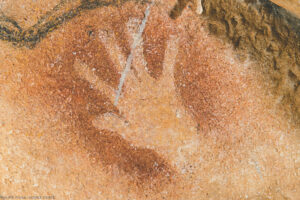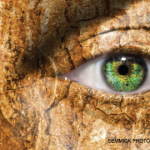I have been reading Yuval Harari’s thought-provoking and engaging book, Sapiens: A Brief History of Humankind, about our species’ struggles and the path that led to our emergence as the predominant species.
I was captivated by the drawing of the hand of one of our ancestors and mused about what that forebear was thinking as they placed their hand on the wall. The depiction of that ancient hand seems so similar in its shape and size to our own modern hand. Was syndactyly present between the third and fourth fingers? It seems they could forage and hunt for food. Did they have time to play any games? Were they able to paint, sculpt or draw? The stories they might tell have captured my imagination.
Thinking about our prehistoric relative, I also consider the patients we care for every day. Each day we begin our office visits with a handshake and a smile. My dear friend and colleague William (Bill) Arnold, MD, reminded me of the aphorism, “The hand is the calling card of the patient with arthritis.” The chief concern of our patients is often centered on pain and discomfort in their hands. We see in their faces the distress and anguish at not being able to do simple tasks about their home, the absence of pleasure in their inability to play with family and friends or having to make difficult choices to continue their work.
They come to us for help to turn their lives around. As we inspect the skin of the fingers, we look for subtle changes of thickening and tautness or, perhaps, the woody texture of scleroderma. We are vigilant to find different, colorful, eye-catching rashes (e.g., periungual telangiectasia, psoriasis, purpura, petechiae and many others). Thick, and often bulky, friction rubs of tendons and hard, firm nodal enlargement are familiar signposts. In the next few moments, we may observe the wasting and atrophy of thenar muscles and consider carpal tunnel syndrome.
We have witnessed the decline and disappearance of many severe hand complications, such as the digital infarcts of rheumatoid arthritis (RA), the mutilans and pencil-in-cup deformities of psoriasis, and the transformation to much less generalized boggy and mushy synovitis at the first visit in our patients with RA to just the appearance of symmetric second and third metacarpophalangeal joint involvement. Possibly, these findings are today’s rheumatology relics.


